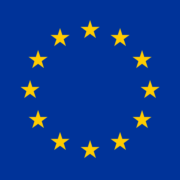How Can You Increase Your Wi-Fi Security? Here are a few simple ways…
Wi-fi Security Made Simple
Failure to implement basic Wi-Fi security practices is leaving organisations vulnerable to digital security threats, yet there are simple steps you can take to increase your protection.
Separating guest Wi-Fi access
Free guest Wi-Fi is no longer a perk, but an expectation. Whether customers are visiting the bank or barber, their local coffee shop, museum, or department store, they expect to be able to find an internet connection. The same is true for business meetings. If clients or business partners visit, it is very likely they will want to be able to access their emails, calendars, and cloud-based files from your offices.
Guest Wi-fi Access is risky!
Allowing anyone from outside your organisation to access your company’s private Wi-Fi is risky. Not only could viruses and malware reach your network from guests’ infected devices, but it could also provide a hacker with a route into your company’s vital information and systems. As Wi-Fi becomes more powerful, it broadcasts further. Someone who has accessed your Wi-Fi previously could automatically connect to your network weeks or months later, without even being in your building affecting your wi-fi security. Read more












